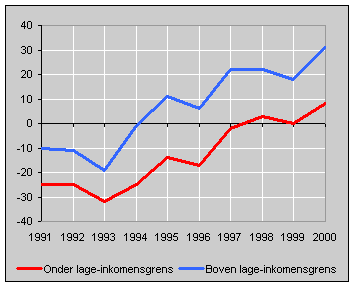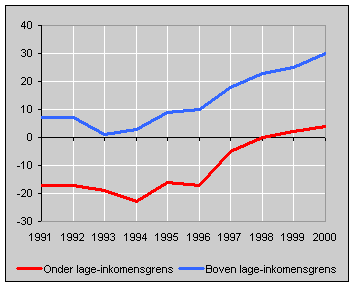Consumer confidence also up among low-income households

Households living on an income below the low-income threshold are usually more pessimistic about the state of the economy in general and about their own financial situation than households living on an income above the threshold. Among low-income households, mainly single people (in particular older ones), single-parent families, and, although to a lesser extent, families with children held the more negative views regarding consumer confidence.
Although consumer confidence has been increasing among low-income households since 1993, it did take longer for optimism to prevail in this group. While consumer confidence has been predominantly positive among higher income households since 1995, households with lower incomes tipped the balance positively only in 1998 – for the first time in the nineties. Although the optimists were briefly in the minority again in the following year, consumer confidence among low-income households turned positive again in the first six months of 2000.
Consumer confidence

When consumers are more confident, they are usually more willing to buy - expensive - durable goods. Households with a poor income position usually buy such items later than people with a better income position, sometimes after waiting for prices to drop. Single people over 65, single-parent families and households with children are less willing to spend their money than the average low-income household.
Willingness to buy

Ger Linden